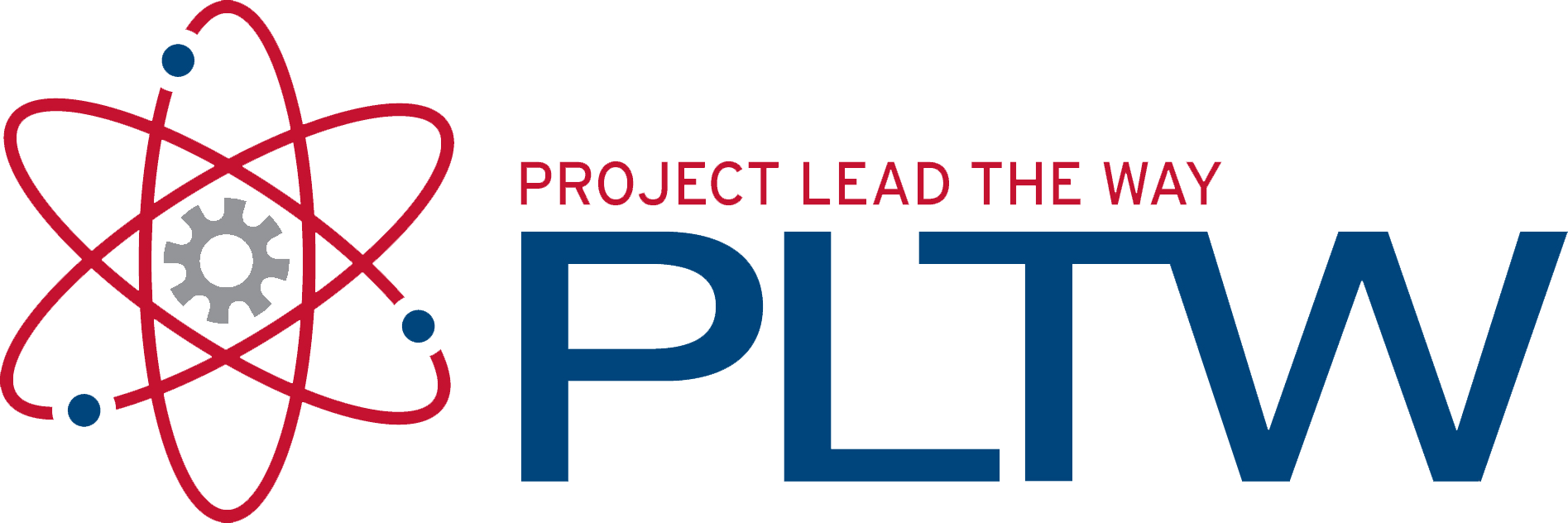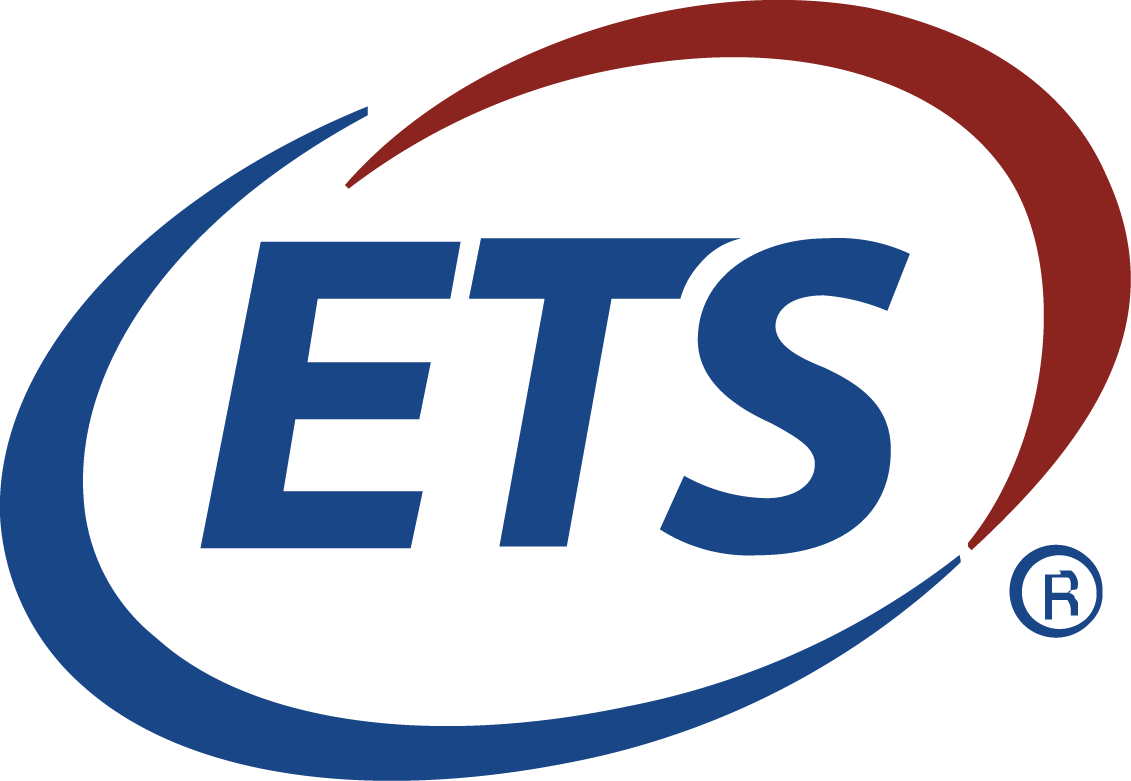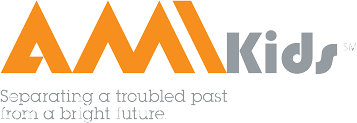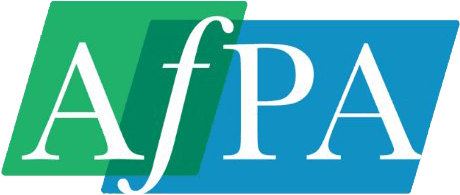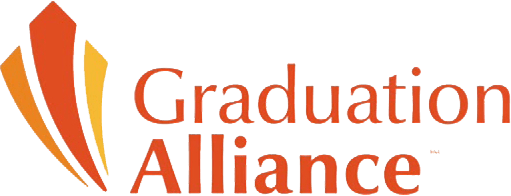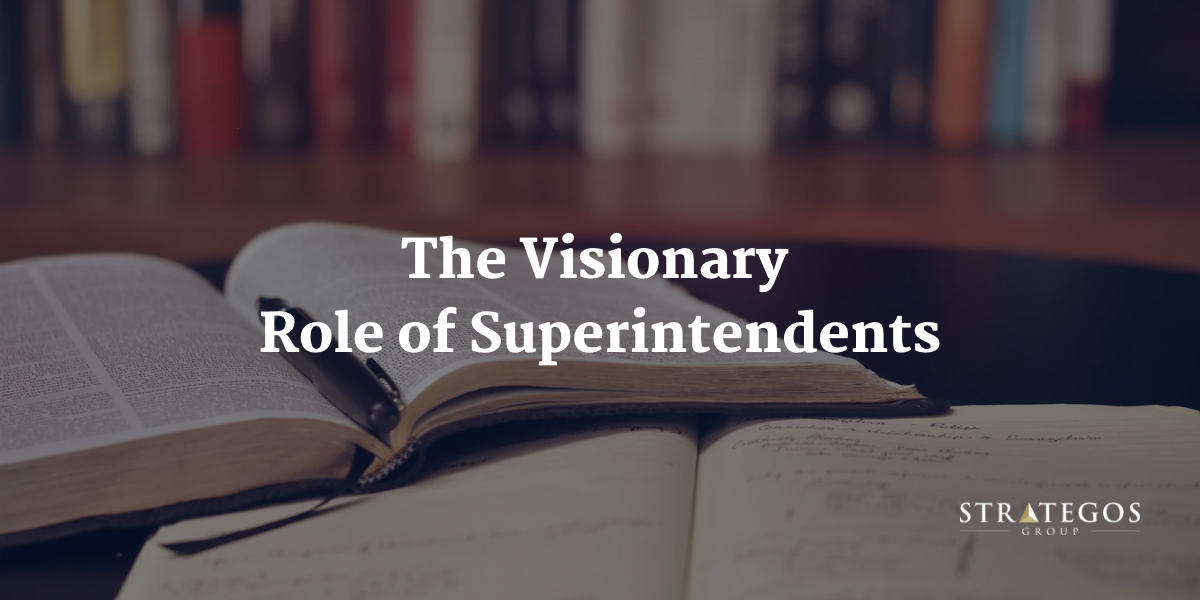
Today’s superintendent encompasses more than just managing the levers of education within a state. These leaders aspire to improve student achievement, acting as advocates, confidants, and experts to provide positive change.
As senior leaders, state school chiefs must remain focused on the big picture while managing day-to-day operations of district needs working closely with legislators and school board members to allocate state budgets properly. More than ever, these leaders are entrusted with promoting the vision and values shared with all stakeholders of their states while sustaining student success as their Northstar.
Strategos Group Partner Tom Luna sat down with Kirsten Baesler, the State Superintendent of North Dakota, at the most recent ExcelinEd conference to learn how she is shaping the future outlook of education in her state.
Below are some key takeaways from Tom’s interview as part of his Swimming Upstream series. Tom explores the topics of working with the state’s governor, promoting innovations, propelling early childhood learning, and Baesler’s new additional role as president of the Council of Chief State School Officers (CCSSO)—a position Tom himself once held.
Tom Luna: We're at the ExcelinEd conference, and today, my good friend, Kirsten Baesler, the State Superintendent of North Dakota over the last 10 years, is here with me.
Many State Superintendents are appointed, yet just over a dozen states elect their state superintendents, and Kirsten’s state of North Dakota is one of them. You were recently reelected to your position in the pandemic period of 2020. Would you mind sharing your opinion on the elective process?
Kirsten Baesler: Running a campaign while also running an agency is never fun, but I prefer the route of an election. It allows the state superintendent to keep education front and center. I've had great relationships with Governor Jack Dalrymple and now with Governor Doug Burgum, always remaining on the same page.
Governor Burghum is an entrepreneur and successful businessman who brought business technology into North Dakota. He realizes the importance of education and is passionate about innovation and ensuring that we have 21st century schools for our students and preparing them for their future.
It is tremendously helpful when you can work with your legislature and your executive branch, your governor. But you know, there are times when education is not the priority in legislative sessions. The governor has to do other things as part of compromising and governing, giving chips up to get things done.
In contrast, I never have to do that. I don't have to give up chips of K-12 education to get something else done. The governors I’ve served appreciate that I can keep the main thing running and do what they need to do.
Goals and Inputs
Luna: You didn't run to be state superintendent just to maintain the status quo. Let's talk about swimming upstream from the status quo to accomplish great things in North Dakota.
Baesler: Before being the state superintendent, I held many positions. I was a classroom teacher and building principal and worked on district-level leadership. I was the president of a school district directly across from the district I was employed. I served on that board for nine years and was president for seven years.
I saw my school board, teachers, principal colleagues, and family and friends all wanting our public schools to do things differently. Again, autonomy and flexibility to be creative and meet the needs of individual students stood out.
I remember one late night in my first month of appointment at the Capitol, saying to myself, “This is a four-year gig with no guarantee of being reelected, so what do I want to accomplish?”
As an analogy, I knew I wanted to move the ball down the field and not just rip up the turf while I was here. So I wrote down three things I wanted to accomplish: 1. To provide creativity, flexibility, and autonomy in our schools through policy. 2. Invest more in early childhood education, and 3. Close the gap for our Native American students and our students living in poverty. Those were my three big, audacious goals, and that's what we've set about working to do.
There are many inputs to accomplish goals—the advancement of computer science, career and technical education, and accountability are factors. As a building leader, you can make curriculum choices and schedule changes. Your levers are different at the state.
How do you incentivize? How do you create opportunities? How do you create expectations of accountability? We're building a new accountability system of Choice Ready, investing, partnering with our health and human services agency, and working with our legislature and governor.
Innovations and Change
Luna: Let's talk specifically about the changes underway. When you talk about innovation, the pandemic disruption in schools activated unforeseen opportunities. By tapping into ingenuity and creativity, you're allowing schools and districts the license to be innovative. Talk about taking advantage of changes and the results.
Baesler: We were fortunate because, in 2015, we passed Senate Bill 2186, which essentially allowed the state superintendent to waive any piece of the statute in the chapter of K-12 education. It allowed our school districts to say, “You know, some things are standing in the way of what we want to do for kids in our building and district.”
Six schools took hold of it, began doing things quite differently, and thrived. The schools increased student agency, moved away from the Bell system, and we’ve created a continuum of learning. I believe we are the first state in the nation that doesn't force their school districts to back map personalized learning into a Carnegie unit credit. So we've identified a learning continuum.
Luna: Is it a mastery approach?
Baesler: It's mastery vs. seat time. These kids were fluid in their learning journey. Being fluid in the brick-and-mortar building also allowed them to be fluid in their virtual learning. We're using a mastery transcript to measure, and our universities are on board, accepting all sorts of different-looking track transcripts.
Luna: That's a huge accomplishment. There are a lot of conversations about mastery-based and awarding credits based on work experiences. Yet, universities must accept those experiences, or parents will push back and choose the old-fashioned way to get their children into college.
Baesler: We have that assurance from our university system, our private colleges in North Dakota, and even some across Minnesota. We have passed the Learn Everywhere Bill. If a law stands in the way of a local school district, they can come to me with something different and provide evidence of student betterment. Our kids are getting credit for Learn Everywhere internships, Boy Scout and Eagle Scout projects, and other programs.
Learning occurs everywhere. It's more than just Monday through Friday, eight to four, in a school building. We recognize that, and our university systems are accepting the transcripts.
Students are taking ownership. For example, I visited with a girl (senior) from Northern Cass school just two weeks ago who realized she hadn't mastered geometry the way she wanted and is back and redoing her study. Northern High School's policy is that your transcript isn't final until you walk across the stage on graduation, and this student decided on her own to relearn before graduation.
Luna: That plays into ownership inside education. She recognized a need, and the opportunity was there for her to address it.
Baesler: Yes, but it's a scary thing. Building leaders must be courageous and trust to create student agency in this way. We created a portrait of a graduate, set the expectations, and trusted our local school leaders. But local school leaders must remain vigilant because some parents who have been successful in the traditional school are hesitant when they see their children experiencing school differently.
School leaders must work with their board for a different way of funding and prioritizing other mechanisms in their local school budget. They must also communicate with parents to demonstrate it’s a good thing. Parents will ask about getting their kids into top schools. So, constant community backing is essential to swimming upstream.
Luna: I’ve noticed that most people want education to do better, but if it doesn't look exactly like it was when they went to school 20 to 30 years ago, some get nervous.
Baesler: Yes, we saw that, especially early in the process. Initially, the community embraced different learning for this century. But it became real when the students were not bringing home certain homework and not on a bell schedule. So, that's where leadership matters to be courageous and bring your community along with you.
Early Childhood Literacy
Luna: Literacy has been a big focus of the conference, with amazing conversations about the importance of kids' reading and what we can improve with the science of reading. Let's talk about your work in early literacy, which is very important to you. You’ve seen great results with Waterford and other programs.
Baesler: We were successful in passing some legislation that requires the science of reading. We have yet to get so far as to prohibit three queueing, but the point was to ensure it's implemented. Banning something isn't necessarily the answer. Implementation and training are essential.
Investing in early learning and literacy, from zero to five, is critical. Waterford was amazing because we have rural, isolated schools like some other states. I have 129 school districts that are 100 miles away from the nearest McDonald's or Starbucks. Also, there is a small supply of Montessori schools or preschools. So, it comes down to engaging families.
I liked Waterford and Upstart because of the family piece. It engages the parents in the home, and the parents know what to look for—the academic language to use with their child, which is essential to create that bridge and trust between home and school. Unless we do this with our families and strengthen that bridge between school and home, we'll be swimming upstream forever, and we don't want to do that. That's tiring.
CCSSO Leadership
Luna: You're now the president of CCSSO, and for people to understand, that's kind of the National Governors Association, but for the 50 state chiefs. I remember years ago when I was in office and attending a CCSSO conference, and you were a brand new state chief. We were in a session, and you stood up and said, “You know, I've been here for a good part of a day, and I haven't heard one person talk about a child.”
You've kept that commitment and focus in office for the last 10 years. You opened up all of our eyes. I remember thinking, “You’re right, we can get caught in the weeds with agendas, and more can be done to shift focus and talk about children.”
Baesler: Thank you. Two weeks ago, I took over as the president of CCSSO and addressed the membership. People asked about my platform, and I said, “My platform is students.” My platform is serving students and keeping them as the primary objective. I stated that there are many things we need to discuss as an organization, but they represent inputs to the bigger goal of student outcomes.
To listen to the full interview with Kirsten Baesler, head over to Tom Luna’s Swimming Up Stream podcast and tune into additional exciting discussions with other guests.


